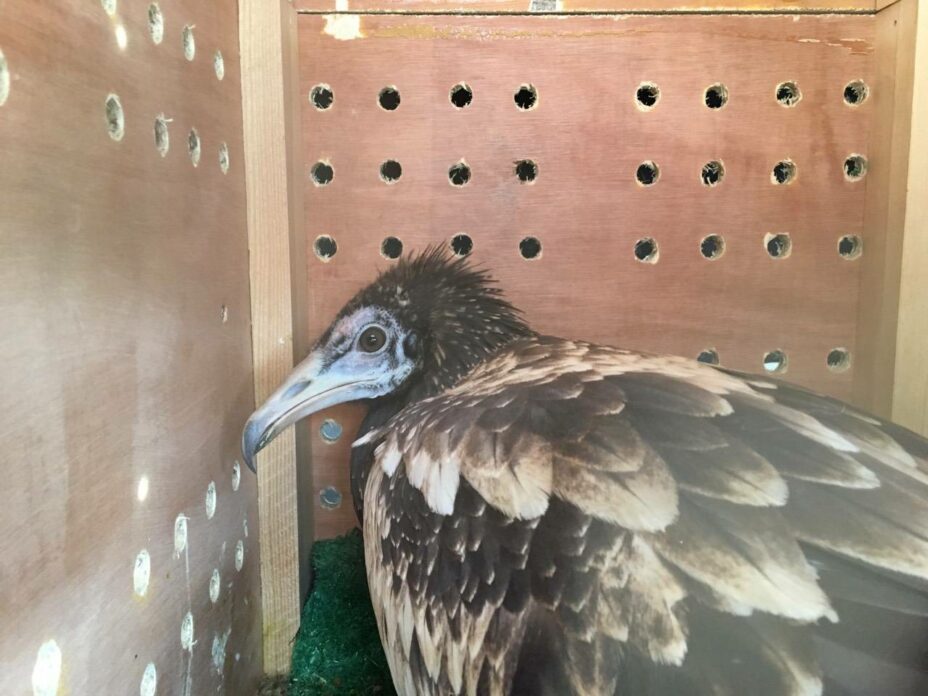Once widespread throughout the Balkans, the black vulture (now breeds only in a single colony in the region, in Dadia (northeast Greece), where the breeding population has been stable or slightly increasing (now totalling about 35 pairs) due to the valiant conservation efforts there implemented by WWF Greece.
While the populations in Spain (2,500 breeding pairs), France (35 pairs) and Portugal (10 pairs) have been increasing, the species remains rare and localised in the Balkans, with very few observations outside Dadia.
The VCF and other partners are now starting a LIFE project (Vultures back to LIFE) to reintroduce the species to the Central Balkan Mountains in Bulgaria – with first releases planned for 2018, so a string of recent observations of black vultures away from Dadia are certainly good news!
Currently there is a black vulture in Kresna gorge in southwest Bulgaria – the fourth observation of the species there this year – but contrary to the others, this one seems to be staying for a long time, and has been present since early November. The black vulture roosts and feeds with the 40+ griffon vultures using the supplementary feeding station there managed by the Fund for wild flora and fauna /FWFF. This bird is 2 years old – see photos and the video below. All the other black vultures seen in Kresna this year were birds born last year (2014).
Last May, Gerasimos Beriatos observed and photographed a Black Vulture in Agrafa, in the south of Pindos mountains range (western Greee, together with some griffon vultures. The same individual has been observed every winter for the last 5 years in the southwest corner of the Balkan peninsula, in the area of Arakinthos-Akarnanika-Boumistos mountains.
(Photos Hristo Peshev/FWFF)





